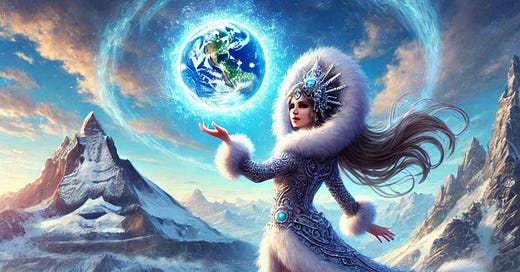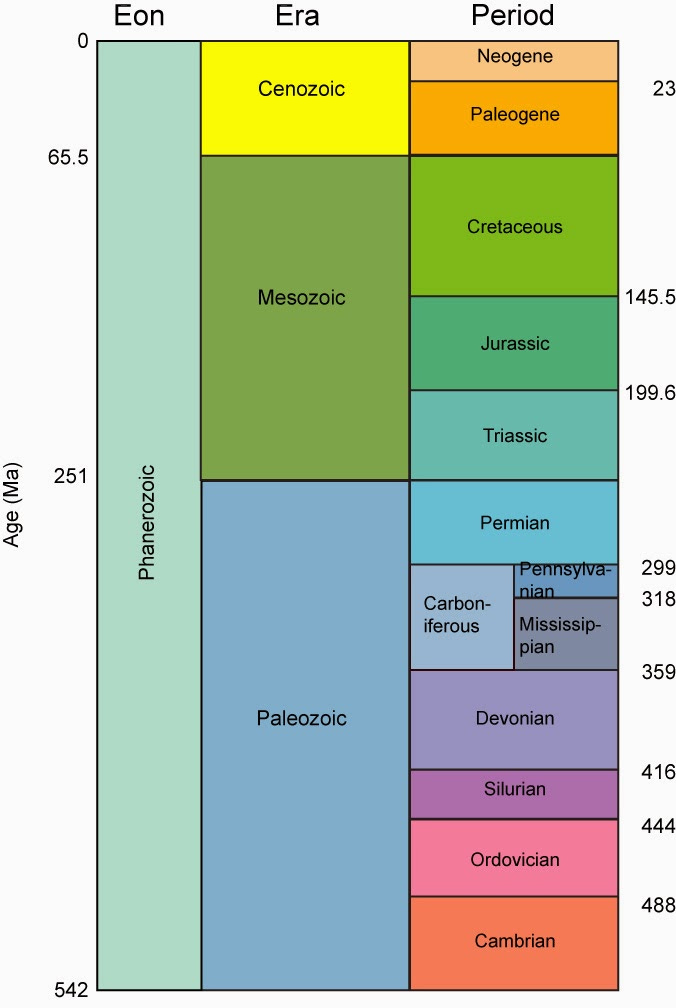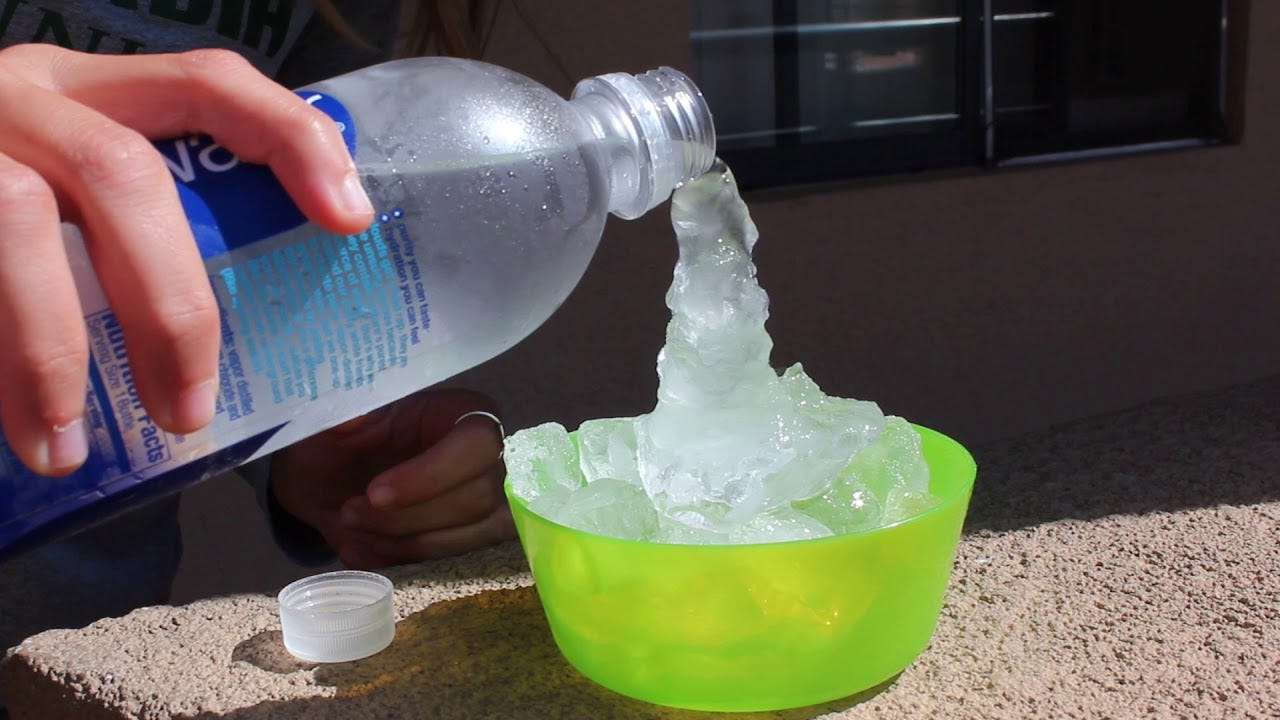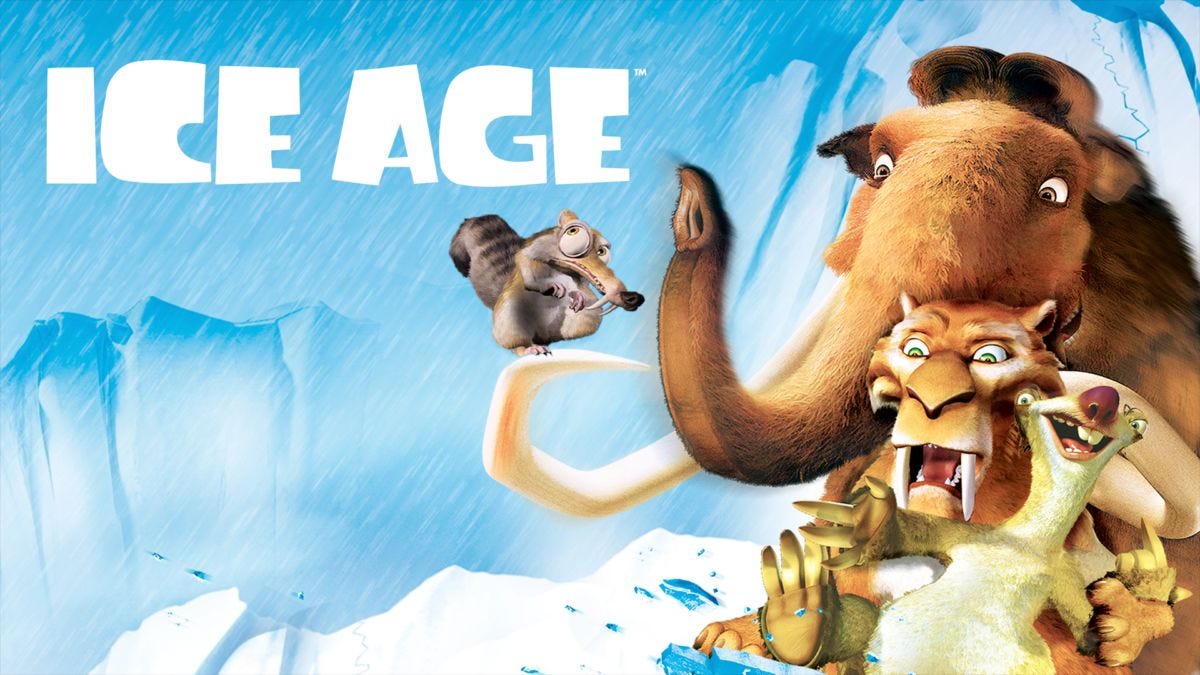Gaia is a Capricious Deity: What Conditions for an Ice Age?
Does the Miranda Warning hold for scientists?
Ice ages are a feature of Earth’s climate history. But when exactly do they occur? Gaia is a little capricious in this field and, sometimes, ice ages come when you don’t expect them — or do not occur when they should.
Let me start with a figure from an article by Retallack and Conde:
X axis: CO2 concentration ppm — dark dots are ice ages, white dots are interglacials. The points cover some 300 Myears of Earth’s history. From Retallack and Conde, 2020
I am a big fan of Gregory Retallack, the greatest world’s expert on paleosoils and, incidentally, another Gaian-oriented scientist. If you have time, read his book “Soil Grown Tall.” It is one of those books that can completely change your perception of the world, at least in terms of how the ecosystem works. Once you have learned what a “Mollisol” is (and that “she” is, actually, one of Earth’s Goddesses) then your views of many things will never be the same.
The figure above is based on the study of plants’ stomata and provides some of the clearest evidence we have about the correlation between CO2 concentration and temperature over a huge time span: about 300 million years; more than half of the Phanerozoic. I am always amazed that there are scientists who can provide such long-term data about ages that are so remote.
On the other hand, note something in the figure: Dark dots represent ice ages, while white dots are ice-free periods, sometimes called “interglacials.” Note the overlap: ice ages tend to cluster at low CO2 concentrations, but there are several exceptions. There are low CO2 periods with no ice ages, and some ice ages occur at relatively high CO2 concentrations.
Let me tell you about another example: In a recent paper on “Nature,” Jurikova and her coworkers examined ancient CO2 concentrations using a proxy based on boron isotopes. They studied in particular the the Paleozoic, the first era of the three that form the Phanerozoic Eon, the past 542 million years of Earth’s history. A time when life was taking hold of the land and showing a variety of animals and plants.
There were two ice ages during the Paleozoic. One is the Andean-Saharan Ice Age (460 to 430 million years ago), the other the Late Paleozoic Ice Age (360 to 260 million years ago). Once, it was called the “Karoo” ice age from a place in South Africa, now it is affectionately called “LPIA,” Late Paleozoic Ice Age. (scientists are fond of acronyms that leave us, poor nincompoops, a little perplexed). Both these ice ages are normally related to the expansion of Earth’s biosphere that removed large amounts of CO2 from the atmosphere and hence cooled it.
Jurikova’s work was dedicated to the LPIA and she declared that: "I lead an international team of scientists who have just published research demonstrating, for the first time, that carbon dioxide (CO₂) played a central role in this huge climatic transition."
If you know a little about these matters, you’ll immediately notice a certain degree of hype in this statement. It is normal in the current situation of competition for limited resources. Scientists are forced to hype their discoveries; they must be new, breakthroughs, change everything, “gee-whiz" moments, and the like. But that’s not always the case.
It doesn’t mean Jurikova’s paper is not a good paper. It is, actually, an excellent piece of work that confirms how the end of the LPIA was accompanied by a considerable rise in CO2 concentrations. But several other proxies showed similar results, as you can see in this figure from Jurikova’s paper
Jurikova’s data are the violet circles. You see also data by Retallack and others. The uncertainty is considerable, and some old data don’t show the peak, but several studies show a CO2 peak in correspondence with the melting on the LPIA ice. You can say that Jurikova’s data are better and show a sharper transition, but they are not very different.
In the figure, you also see some data for earlier Andean-Saharan ice age, but not sufficient to say much about it. You also see the tremendous CO2 bump upward that ushered the Mesozoic era, the warm time of the dinosaurs. So, there is some logic in what we are seeing: there is a proportionality between CO2 concentrations and temperatures.
So, things click together reasonably well for the LPIA, but that’s not normally the case. For instance, my colleague Anastassia Makarieva, noted in a post in her blog that Jurikova et al. didn’t comment on the fact that when CO2 concentrations went down, in the late Permian, the ice age didn’t return. Why?
The problem is that CO2 has become a politically charged subject, so scientists tend to be careful to avoid providing material that can be exploited by those critics who operate as “Merchants of Doubt,” as they were defined in the classic book by Oreskes and Conway. In this area, there holds the principle of cop movies, when they say “anything you say can be used against you.” The Miranda warning was not developed for climate scientists, but they often seem to take it into account in a form that goes as “anything you say will be misrepresented to show that climate science is a hoax.” So, caution is understandable and Jurikova probably left this subject to a future paper, where it could be examined in depth.
In any case, often science advances exactly because it faces apparent contradictions. So, the late Permian data are telling us something that we should know, but we don’t always remember: CO2 is not the only factor determining the temperature of the atmosphere. At least five factors can force Earth’s temperatures. When we discuss ice ages, albedo, the fraction of light Earth reflects into space, is probably the crucial factor.
Now, an ice age is a phase transition — from liquid water to ice. If you worked on phase transitions in the real world, you know that they may be much trickier than they seem when shown in a neat and schematic phase diagram. Liquid water can exist in a metastable state well below the freezing temperature — it is called “supercooled” water. It is for this reason that you may force rain to fall by “seeding” clouds with small particles that will act as nucleating centers for the water vapor in the atmosphere. They are the trigger that will start the formation of water droplets, or ice.
Something similar occurs on a larger scale over the whole planet, although it doesn’t necessarily involve supercooled water. To have an ice age, you need to trigger the phase transition. You need to have some ice at the pole that will increase the albedo enough to lower the temperature and cause the formation of more ice. That will cause the removal of some CO2 in the atmosphere, absorbed into oceans, and hence even lower temperature. More ice will further raise the albedo and lower temperatures, generating more ice. That will remove more CO2, and so on. In time, you’ll see the ice sheets expanding everywhere.
Of course, mammoths didn’t exist during the LPIA, they were creatures of a much later ice age!
All that means you need suitable conditions at the poles for an ice age to start. If it is not humid and cold enough, then an ice age will not start even though the global average is theoretically low enough. Conversely, once it has started, it may not be easy to get rid of it, even with rising temperatures and CO2 concentrations. For instance, in our age, Earth may be stepping into a "hothouse" period, but we still have plenty of ice at the poles, and its high albedo stabilizes it — for now.
These conditions provide a reasonable assessment of the apparent contradiction in the data for the late Permian climate. However, as Anastassia correctly notes in her post, a more difficult conundrum remains regarding the lack of correlation between CO2 and temperatures during the second half of the Mesozoic. I think albedo is the key factor in that case, too, but we’ll discuss that in a future post.
Eventually, complex systems are never fully predictable: they are driven by potential energy dissipation, but they may decide not to dissipate it. Sometimes, Gaia is a capricious deity, indeed.











Yes she is capricious indeed! We puny humans will never fully understand, but I do wonder this: where does vegetation cover and its impact on the water cycle fit in terms of the relative magnitude of climate impact?
Albedo is spectacularly important, there is a great, short video explainer embedded below.
https://kevinhester.live/2019/08/27/cascading-consequences-of-the-loss-of-arctic-sea-ice/